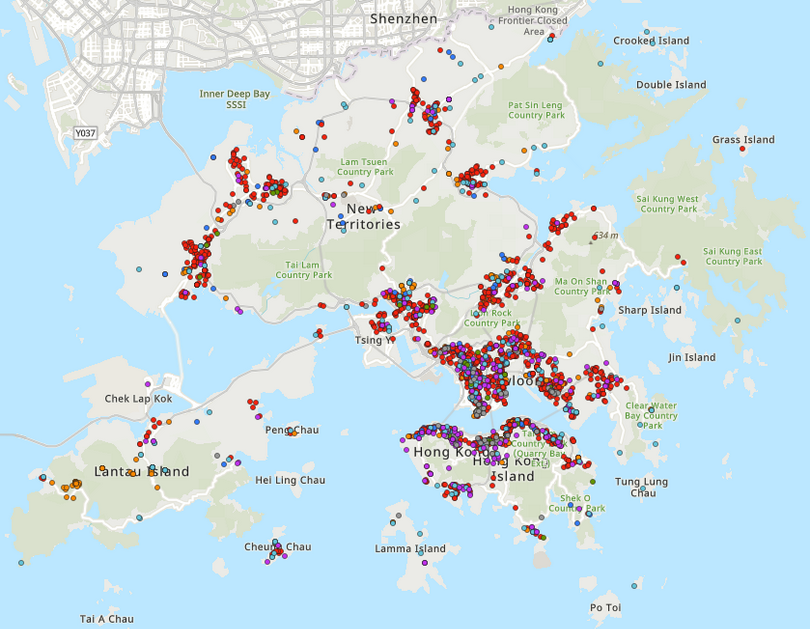The Online Spiritual Atlas of the Global East-Hong Kong was released on October 25.
The Center on Religion and the Global East at Purdue University officially launched the virtual landscape of religious sites in Hong Kong after releasing the Online Spiritual Atlas of China on December 18.
Professor Yang Fenggang, the founding Director of the Center on Religion and the Global East at Purdue University and also the founding Editor of the Review of Religion and Chinese Society, shared that the online atlas can illustrate sites of major religions on a point map, filter them based on their districts and religion type, and offer thematic maps of minor religions and Hong Kong schools by each religion. The last function of “data analytics” found out that there are more than 2,000 religious sites in the metropolis, in which Protestantism accounts are more than the half.
Dr. Kim-Kwong Chan, an ordained Protestant minister and a scholar in the fields of theology and China Studies, delivered a speech on why Hong Kong has become a fascinating place to study the co-existence of diverse religions.
Dr. Chan said that during the exploration, he realized that there are so many religious groups within diverse religious traditions or among the inter-religious dynamics in the city. Traditional world religions or new religious movements across the globe were able to co-exist without any major conflict with other places.
He explained that there are three factors that contribute to the diversity. Being part of the Chinese culture and embracing the western culture during the British governance, Hong Kong became the ideal place as a crossing road between the East and West, where different religious manifestations can be included as well as tolerated. Second, under the British colonial governance, the government did not define the legal aspect of religious organizations, so religious groups can exist as an organization or a company. The last factor is that new sorts of migrants from the Philippines, India, Pakistan, Korea, Africa, and the Middle East grew along with their businesses in Hong Kong and also brought their religious practices.
Professor Fuk-tsang Ying from the Divinity School of Chung Chi College of the Chinese University of Hong Kong addressed the online participants with a lecture titled “The Current Situation of Christianity in Hong Kong”.
From the historical perspective, Protestant Christianity in Hong Kong can be classified into three phases: 1842-1949, 1949-1970, and post-1970. There were 43 churches in the city with a total of 28,808 congregations, according to the book History of Christianity in Hong Kong published in 1941. Before the Japanese occupation of Hong Kong in 1941, there were 93 churches with the development focused in Kowloon, Professor Ying estimated himself. The second phase from 1949 to 1970 witnessed the flourishing of Christianity in Hong Kong as the church was committed to responding to the urgent needs of the post-war society in which embraced more than one million refugees from the mainland. After 1970, New Town Development influenced the regional distribution of Christianity in Hong Kong, thus the number of churches in Kowloon and New Territories surpassed that in Hong Kong Island. He deemed that there were totaled 1,305 churches in 2019.
Afterward, Professor David Palmer from the University of Hong Kong presented a talk titled “Religions in Hong Kong: Folk Religion, Daoism, Buddhism, Other Religions”.
The Online Spiritual Atlas of the Global East-Hong Kong can be accessed here.












